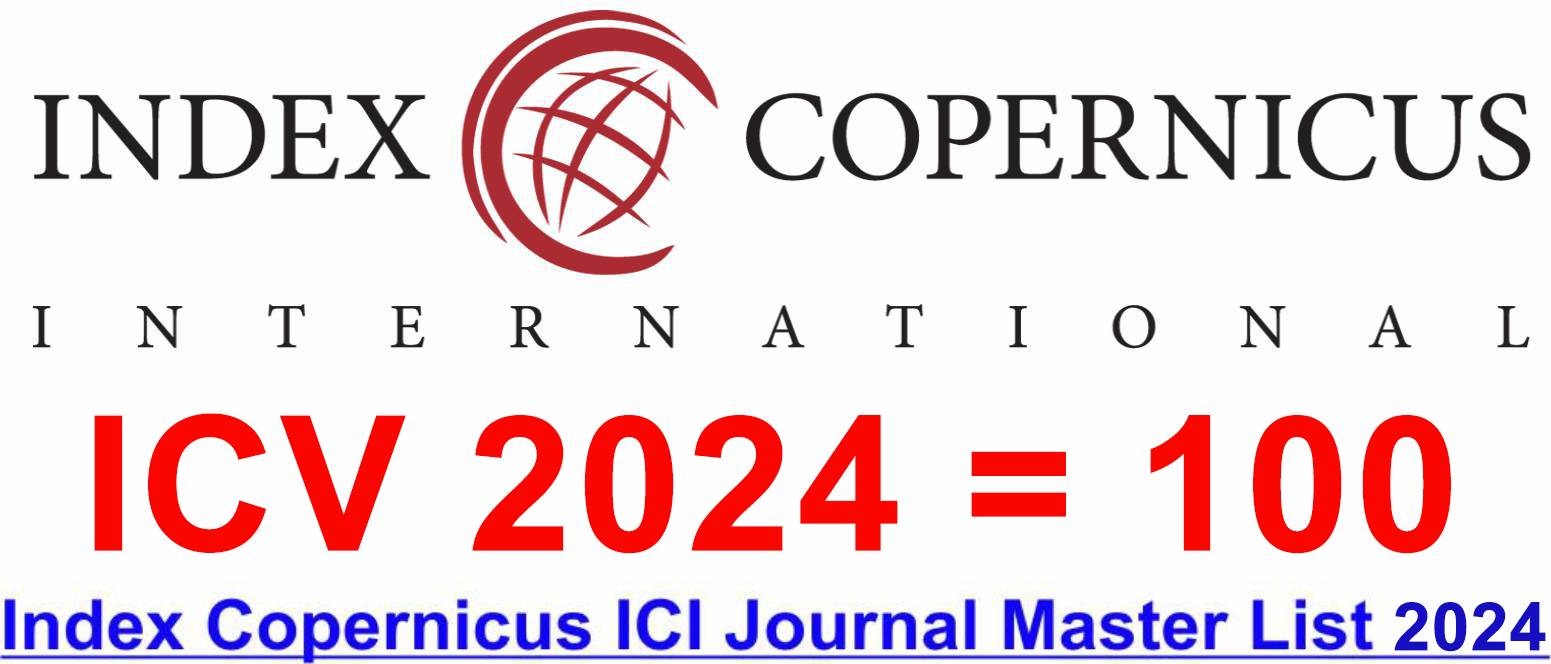The Relationship Between Users' Performance Expectancy and Users' Behavioral Intentions to Use Mobile Commerce Transactions in The Libya Context
DOI:
https://doi.org/10.46977/apjmt.2021v02i02.003Keywords:
UTAUT, Libya, Performance Expectancy, Behavioral IntentionAbstract
The purpose of this study is to see how users' performance expectations affect their behavioural intention to use m-commerce applications in Libya. The participants of this study are 310 respondents. Unified theory of acceptance and use of technology (UTAUT) has supported the hypothesis of this study. The findings suggested that there is positively relationship between users’ performance expectancy and users' behavioral intention. Furthermore, performance expectancy has a positive effect on behavioral intention to use m-commerce. This study contributes to the body knowledge on m-commerce usage. It also providing practical guidance for the Libyan government on how to improve user intention for use m-commerce systems.
Downloads
References
Abou-Shouk, M. A., & Khalifa, G. S. (2017). The influence of website quality dimensions on e-purchasing behaviour and e-loyalty: a comparative study of Egyptian travel agents and hotels. Journal of Travel & Tourism Marketing, 34(5), 608-623.
Ajzen, I., & Fishbein, M. (1975). A Bayesian analysis of attribution processes. Psychological Bulletin, 82(2), 261.
Alduaij, M. Y., & Al-Amari, H. (2016). Factors Moderating Students Adoption Decisions of Mobile Commerce. Review Pub Administration Manag (4: 180), 2.
Alsheikh, L., & Bojei, J. (2014). Determinants Affecting Customer's Intention to Adopt Mobile Banking in Saudi Arabia. Int. Arab. J. e Technol., 3(4), 210-219.
Bahia, K., & Suardi, S. (2019). The State of Mobile Internet Connectivity 2019. GSMA Intelligence. https://www.gsma.com/mobilefordevelopment/wp-content/uploads/2019/07/GSMA-State-of-Mobile-Internet-Connectivity-Report-2019.pdf
Benou, P., Vassilakis, C., & Vrechopoulos, A. (2012). Context management for m-commerce applications: determinants, methodology and the role of marketing. Information Technology and Management, 13(2), 91-111.
Blaise, R., Halloran, M., & Muchnick, M. (2018). Mobile commerce competitive advantage: A quantitative study of variables that predict m-commerce purchase intentions. Journal of Internet Commerce, 17(2), 96-114.
Chan, F. T., & Chong, A. Y. L. (2013). Analysis of the determinants of consumers'm‐commerce usage activities. Online Information Review.
Chen, Y., Fay, S., & Wang, Q. (2011). The role of marketing in social media: How online consumer reviews evolve. Journal of Interactive Marketing, 25(2), 85-94.
Chi, T. (2018). Understanding Chinese consumer adoption of apparel mobile commerce: An extended TAM approach. Journal of Retailing and Consumer Services, 44, 274-284.
Chong, A. Y. L. (2013). Mobile commerce usage activities: The roles of demographic and motivation variables. Technological Forecasting and Social Change, 80(7), 1350-1359.
El-fitouri, M. O. (2015). E-commerce in developing countries: A case study on the factors affecting e-commerce adoption in Libyan companies. International Journal of Engineering Research and Applications, 5(1), 102-115.
Elgahwash, F., Freeman, M., & Freeman, A. E. (2014). Improving online banking quality in developing nations: A Libyan case.
Hootsuite. (2019). The Global State of Digital in 2019. https://www.hootsuite.com/resources/digital-in-2019
https://doi.org/10.6007/ijarbss/v8-i1/3812
Jaradat, M. I. R. M., & Al Rababaa, M. S. (2013). Assessing key factor that influence on the acceptance of mobile commerce based on modified UTAUT. International Journal of Business and Management, 8(23), 102.
Khalifa, G. (2018). The Egyptian Hotels, where in the competitive environment? competitive strategies and market orientation and its impact on customer loyalty: The mediating role of operational performance. International Journal of Management and Human Science (IJMHS), 2(4), 60-72.
Khalifa, G. S., & Abou-Shouk, M. A. (2014). Investigating the success factors of hotel websites: The case of egyptian hotels. Asia-Pacific Journal of Innovation in Hospitality and Tourism (APJIHT), 3(2), 1-21.
Khuja, M. S. A. A., & Mohamed, Z. B. (2016). Investigating the adoption of e-business technology by small and medium enterprises. Journal of Administrative and Business Studies, 2(2), 71-84.
Koehler, J. J. (1997). One in millions, billions, and trillions: Lessons from People v. Collins (1968) for People v. Simpson (1995). J. Legal Educ., 47, 214. https://papers.ssrn.com/sol3/papers.cfm?abstract_id=1469651
Krejcie, R. V., & Morgan, D. W. (1970). Determining sample size for research activities. Educational and Psychological Measurement, 30(3), 607-610.
Lawrence Neuman, W. (2014). Social research methods: Qualitative and quantitative approaches.
Lee, S., & Sohn, Y. W. (2017). Effects of grit on academic achievement and career-related attitudes of college students in Korea. Social Behavior and Personality: an International Journal, 45(10), 1629-1642.
Liébana-Cabanillas, F., Marinković, V., & Kalinić, Z. (2017). A SEM-neural network approach for predicting antecedents of m-commerce acceptance. International Journal of Information Management, 37(2), 14-24.
Littler, D., & Melanthiou, D. (2006). Consumer perceptions of risk and uncertainty and the implications for behaviour towards innovative retail services: the case of internet banking. Journal of Retailing and Consumer Services, 13(6), 431-443.
Marcouse, I., Anderson, P., Black, A., Machin, D., & Watson, N. (2014). The Business Book. London: Dorling Kindersley Limited.
Massoud, A. M. E., Meriam, M. S., Akil, B. S., & Noor, K. B. M. (2017). Developing a model of E-business implementation for SMEs in Libya. IJAR, 3(5), 681-685.
Min, Q., Ji, S., & Qu, G. (2008). Mobile commerce user acceptance study in China: a revised UTAUT model. Tsinghua Science and Technology, 13(3), 257-264.
Moorthy, K., Ling, C. S., Fatt, Y. W., Yee, C. M., Yin, E. C. K., Yee, K. S., & Wei, L. K. (2017). Barriers of mobile commerce adoption intention: perceptions of generation X in Malaysia. Journal of Theoretical and Applied Electronic Commerce Research, 12(2), 37-53.
Mostafa, A. A., & Eneizan, B. (2018). Factors affecting acceptance of mobile banking in developing countries. International Journal of Academic Research in Business and Social Sciences, 8(1), 340-351.
Mrabet, A. (2018). Factors Affecting Electronic Commerce Acceptance and Usage in Libyan ICT Organizations. Liverpool John Moores University (United Kingdom).
Ntsafack, F. W., Kamdjoug, J. R. K., & Wamba, S. F. (2018, March). Exploring factors affecting mobile services adoption by young consumers in Cameroon. In World Conference on Information Systems and Technologies (pp. 46-57). Springer, Cham.
Okazaki, S., & Mendez, F. (2013). Exploring convenience in mobile commerce: Moderating effects of gender. Computers in Human Behavior, 29(3), 1234-1242.
Omar, H. F. H., Saadan, K., & Hamad, O. S. (2013). Review : The Development of a Trustworthy Framework in E-Commerce Applications In Developing Countries. International Journal of Advanced Research in Electrical, Electronics and Instrumentation Engineering. 2(6).
Rodrigues, G., Sarabdeen, J., & Balasubramanian, S. (2016). Factors that influence consumer adoption of e-government services in the UAE: A UTAUT model perspective. Journal of Internet Commerce, 15(1), 18-39.
San Martín, H., & Herrero, Á. (2012). Influence of the user’s psychological factors on the online purchase intention in rural tourism: Integrating innovativeness to the UTAUT framework. Tourism Management, 33(2), 341-350.
Shareef, M. A., Kumar, V., Kumar, U., & Dwivedi, Y. K. (2011). e-Government Adoption Model (GAM): Differing service maturity levels. Government Information Quarterly, 28(1), 17-35.
Swilley, E., Hofacker, C. F., & Lamont, B. T. (2012). The evolution from e-commerce to m-commerce: pressures, firm capabilities and competitive advantage in strategic decision making. International Journal of E-Business Research (IJEBR), 8(1), 1-16.
Union, I. T. (2018). Measuring the information society report 2014. Geneva. Switzerland. https://www.itu.int/en/ITU-D/Statistics/Pages/publications/mis2014.aspx
Venkatesh, V., Morris, M. G., Davis, G. B., & Davis, F. D. (2003). User acceptance of information technology: Toward a unified view. MIS Quarterly, 425-478.
Verkijika, S. F. (2018). Factors influencing the adoption of mobile commerce applications in Cameroon. Telematics and Informatics, 35(6), 1665-1674.
World Bank. (2019). Global Financial Development Report 2019/2020: Bank Regulation and Supervision a Decade after the Global Financial Crisis. The World Bank.
Zhang, L., Zhu, J., & Liu, Q. (2012). A meta-analysis of mobile commerce adoption and the moderating effect of culture. Computers in Human Behavior, 28(5), 1902-1911.
Published
How to Cite
Issue
Section
Copyright (c) 2021 Asia-Pacific Journal of Management and Technology (AJMT)

This work is licensed under a Creative Commons Attribution-NonCommercial 4.0 International License.
















